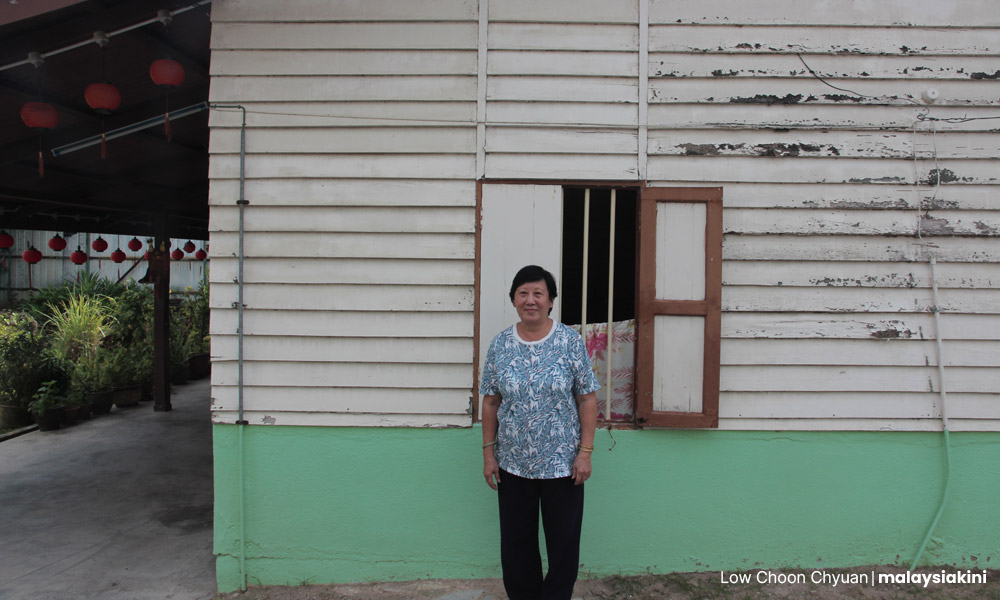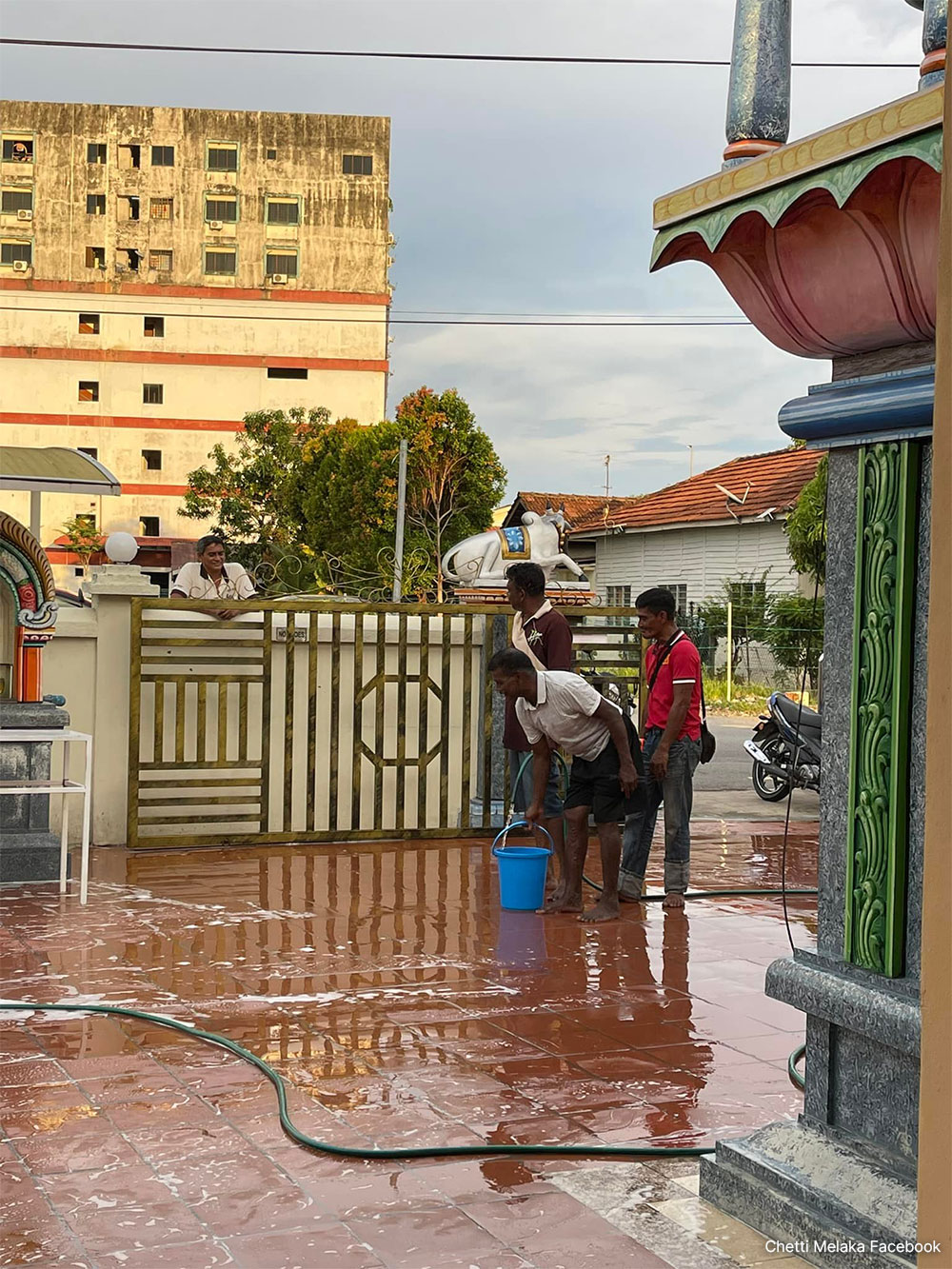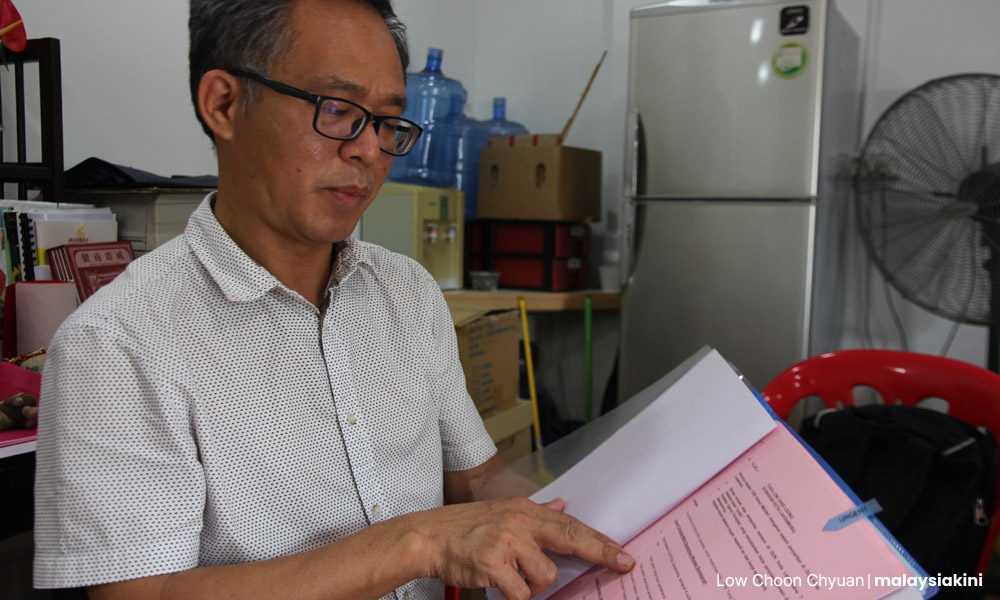In the Malacca town area, there is an archway adorned with elephant heads. Walking through it, one enters the Chitty Cultural Village, home to the Malacca Chitty or Peranakan Indians.
The history of this village can be traced back to the 15th century Malacca Sultanate and it is the only Chitty community in the country.
However, locally, the Chitty Village is known more for being a flood-prone area, with frequent flash floods often appearing in local newspapers.
Last year alone, it was hit by at least four floods. With each episode of flooding, its heritage value is eroded.
Climate change has brought about a dramatic shift in weather patterns, characterised by rising temperatures and an increase in the frequency and intensity of rainfall.
This has led to a higher occurrence of flash floods in the Malacca town area, causing significant damage to the community.

When it comes to flash flood prevention, drainage systems play a crucial role.
However, large-scale reclamation projects along the shoreline have disrupted the effectiveness of the drainage system, making flash floods in Malacca more severe.
Floods when it rains for an hour
Dorris Lee Choon Ying, a resident of the Chitty Village, has experienced at least four flash floods in a year, making cleaning up the aftermath a regular part of her routine.
“On the first and fifteenth day of the lunar month, we are very worried because there are high tides. When it rains for an hour, it will definitely flood.
“The water comes up to my calves. The water will subside two hours after it stops raining.”
Whenever it rains, the retired teacher will wait in her living room, so that she can salvage her furniture from being destroyed when the water level rises.

What if it rains at night? “Sometimes it starts to rain at 1am or 2am, then we don’t sleep. We have to jaga for the whole night,” Lee said.
“Not only me. The whole village will wake up, and we will shout to each other: ‘Hey, the water has risen!’”

In fear of more regular floods
Flash floods caused by storms have been a persistent problem for years in Kota Laksamana, the state constituency where the Chitty Village is located, despite residents' complaints to local officials and the media.
Madam Chiew, a shop owner of Jalan Gajah Berang, lamented that her goods and account books were destroyed by flash floods. The losses exhaust her physically and mentally.
“Nothing we can do, we just have to get used to it,” she said.

Each time it rains, both Lee and Chiew find that their drainage system faces a major problem -- water in the drains remains stagnant.
A local roofing shop owner, who wishes to be known only as Henry, reported the same. In fact, the drains in Taman Kota Laksamana nearly overflow after storms, he said.
“It won’t overflow, but it is hard to say (if this will change). Because of climate change, it might flood in the future.”
Climate change has led to an increase in the frequency of heavy rain events in Malaysia, where the average daily rainfall is less than 10mm. When more than 60mm of rain falls within a two-to-four-hour period, flash floods occur across the country.
Data from the Malacca weather station suggests that climate change has altered the patterns and intensity of rainfall. In 2020, Malacca had six days with rainfall exceeding 50mm, while in 2021, there were 15 of such days.
Drainage water making a big detour
A significant focus of the Department of Environment's long-term flood prevention plans is on upgrading the current drainage system.
Kota Laksamana assemblyperson Low Chee Leong told Malaysiakini that reclamation projects have disrupted Malacca's drainage system, resulting in rainwater being diverted instead of being discharged directly into the sea.
Low tried to raise this issue in the state assembly last December. In response, Malacca Chief Minister Sulaiman Md Ali said there are four main monsoon drain outlets in Kota Laksamana.
During rainfall, rainwater near the Chitty Village area will flow through the Kota Syahbandar monsoon drain and eventually discharge into the Malacca Straits.

However, Low discovered that a reclamation project had been constructed on the drain outlet, causing rainwaters to take a significant detour before being discharged into the sea.
Measurements on satellite images have shown that this water bypass is 600 meters long, delaying the time for the rainwater to discharge into the sea.
“This design is absurd. Monsoon drifts are part of a major drainage system. In theory, the water in the main monsoon drain should discharge into the sea directly, but suddenly, it has to take a detour.”
Low said the Kota Syahbandar monsoon drain has a slow water discharge rate, and the Taman Kota Laksamana monsoon drain is forced to take on the load of the former. As a result, both monsoon drains are unable to effectively discharge rainwater.
“What we want to ask is, why reclaim land at the outlet of major monsoon drains? I suspect this is the cause of Malacca town’s flash floods in recent years.”
Six other regions might be affected
In addition to Chitty Village, other flood-prone areas in Kota Laksamana include Tengkera, Gajah Berang and Jalan Ong Kim Wee. These areas rely on the Kota Syahbandar monsoon drain outlet to discharge water.
A source familiar with the matter, who spoke on condition of anonymity for fear of retaliation from stakeholders, said developers should properly design the drainage systems of reclaimed lands.
“By right, the developer has to build a monsoon drain outlet, so that the water can discharge into the sea directly. In the meantime, new retention ponds should be built to hold the water.
“If you don’t have this plan, the water will flow out to the surface.”
Kota Laksamana currently has four retention ponds. However, the source said that the ponds are stagnant and the amount of rainwater has exceeded their capacity.
Malaysiakini has reached out to the Malacca Chief Minister’s office to get their response.
